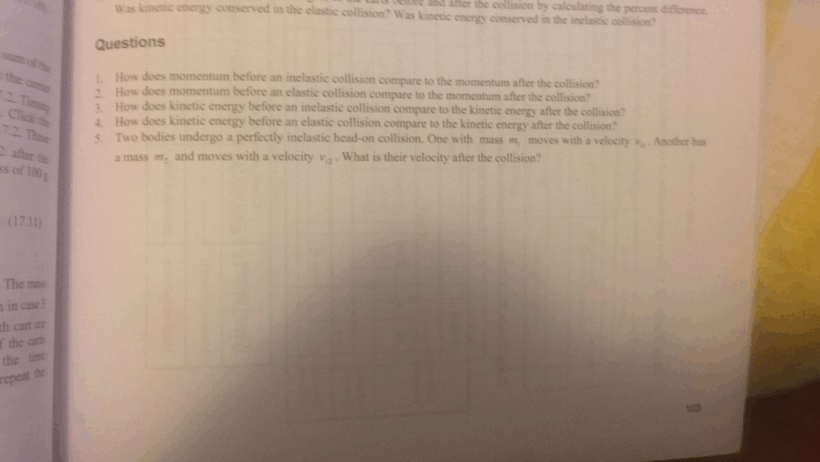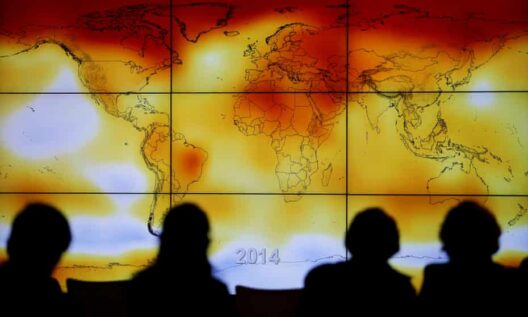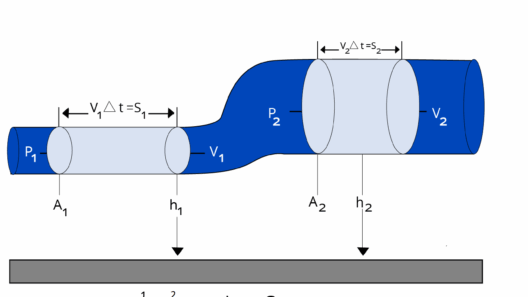In the realm of classical mechanics, the concept of energy conservation plays a fundamental role in understanding the dynamics of physical interactions. One intriguing scenario that invites scrutiny is the glancing collision, often exemplified by billiard balls striking one another at an angle. A pivotal question arises: Is kinetic energy conserved in a glancing collision? This query leads us down a path laden with nuance and intricacies that merit exploration.
To unpack this idea, one must first grasp the definitions surrounding kinetic energy and momentum. Kinetic energy, expressed mathematically as ( KE = frac{1}{2} mv^2 ), where ( m ) denotes mass and ( v ) signifies velocity, quantifies the energy an object possesses due to its motion. Conversely, momentum, defined as the product of mass and velocity ( ( p = mv ) ), contributes an equally critical perspective on collisions. It is paramount to recognize that while kinetic energy and momentum are both conserved in specific scenarios, their behaviors diverge under varying circumstances, especially in collisions.
When two objects collide, several factors dictate whether kinetic energy is conserved. In perfectly elastic collisions, both kinetic energy and momentum remain untouched throughout the encounter. However, glancing collisions often deviate from this ideal due to the presence of rotational dynamics, energy transformation, and frictional forces. Interestingly, inelastic collisions, which are common in real-world interactions, exhibit a decay in kinetic energy as some of it is converted into other forms, such as thermal energy or sound. Consequently, one can infer that glancing collisions typically do not conserve kinetic energy.
Visualize a collision where two billiard balls collide at an angle. The outcome is dictated by a multitude of factors including their respective masses, velocities, and the angle at which they strike. As they interact, the kinetic energy dissipates—a portion transforming into rotational energy, vibrations, or even heat, distinctly illustrating the conservation of momentum while falling short in preserving kinetic energy.
It is imperative to consider the role of angular momentum in this analysis. In a glancing collision, the objects in question often possess significant angular momentum. When they collide, the angular momentum transfers and redistributes between them, further complicating the energy equations. The interplay of linear and angular momentum introduces complexity, emphasizing that not all energy within the system remains in the kinetic form post-collision.
Moreover, the role of external forces cannot be overstated. Real-world collisions rarely occur in a vacuum. Friction with the surface, air resistance, and even the microscopic interactions at the contact point can siphon energy from the system, contributing to the overall change in kinetic energy. This invites one to ponder the broader implications of energy conservation in a world where external influences frequently intervene.
Another pivotal aspect is the angle of incidence and the distribution of energy during glancing encounters. The angles dictate how effectively momentum is transferred from one object to another. For example, a collision occurring at a shallow angle may yield minimal transfer of kinetic energy compared to a more acute impact. This geometric consideration complicates any simplistic analysis of kinetic energy conservation, revealing that energy distribution is as significant as total kinetic energy pre-and post-collision.
Further complicating matters is the material composition of the objects involved. Harder materials exhibit more elastic properties, potentially conserving more kinetic energy than softer ones which deform upon impact. The resultant compression and subsequent energy loss manifest starkly in the collision’s aftermath, revealing how material characteristics contribute to the kinetic energy narrative.
As one navigates through the various forms of collisions—elastic, inelastic, and perfectly inelastic—a pattern emerges pertaining to system behavior. In elastic collisions, kinetic energy is retained, while inelastic collisions witness a transformation to other forms of energy. Glancing collisions, typically categorized among inelastic interactions, frequently underscore the entropy associated with energy loss. Yet, within this loss lies a fascinating paradox: the transformed energy can still perform work within the system, highlighting the adaptable nature of energy itself.
Ultimately, the contemplation surrounding whether kinetic energy is conserved in a glancing collision serves as a microcosm of broader principles at play in physics and conservation. This reflection reveals that while a fraction of kinetic energy may seem to vanish during collisions, the energy remains active, merely transmuting into alternate states or forms. This shift in perspective beckons one to reevaluate preconceptions about energy dissipation and conservation, illuminating the profound interconnectedness that persists even amidst loss.
In conclusion, the inquiry into the conservation of kinetic energy during glancing collisions leads to a rich tapestry of ideas encompassing classical mechanics, material science, and the fundamental principles of energy transformation. While kinetic energy is generally not conserved amidst the complexities of glancing collisions, the exploration offers illuminating insights into the behavior of energy in physical systems. Such reflections may prove beneficial, not just in theoretical pursuits, but in real-world applications that hinge on understanding the conservation principles that govern interactions, be it in sports, engineering, or environmental considerations.








